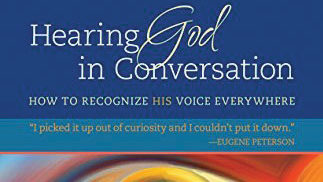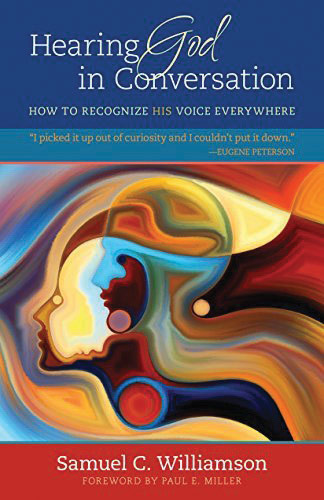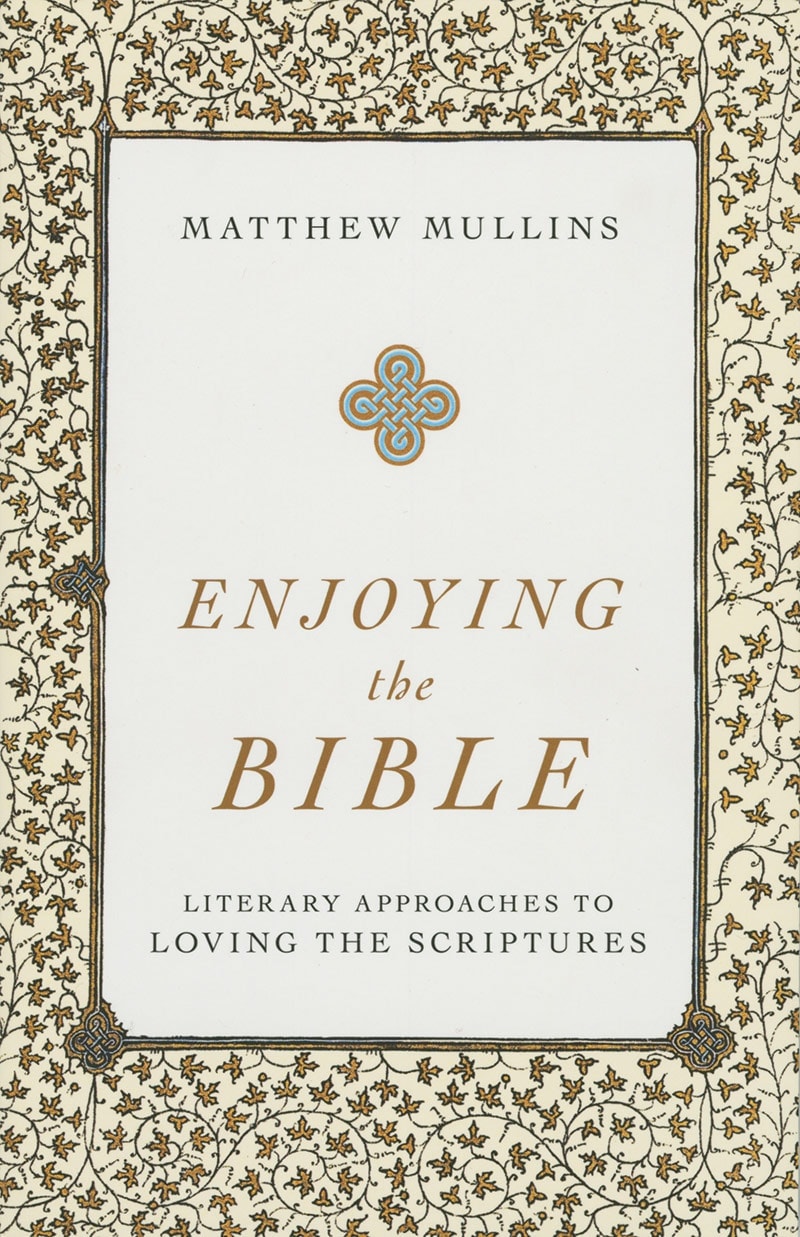
 Hearing God in Conversation: How to Recognize His Voice Everywhere
Hearing God in Conversation: How to Recognize His Voice EverywhereLike fingerprints, human voices are unique. Each has distinct acoustic features that allow you to recognize it from a myriad of other voices: You walk into a busy café to meet a friend; as you open the door, a cacophony of sounds welcomes you—background music, people chatting, clattering cups and saucers; someone calls out, “Hey, I’m over here!” You immediately know that it’s your friend. You recognize him, even shouting from behind you, because you are familiar with his voice.
As Christians we believe that God speaks to people. But what does God sound like? How can we know if we are hearing God’s voice or our own imagination? If you have ever asked yourself these questions, you should enjoy Samuel Williamson’s book. Hearing God in Conversation: How to Recognize His Voice Everywhere is both refreshingly practical and theologically balanced. Williamson makes it clear, from the early chapters, that conversation is the point. Learning to hear God’s voice is about deepening a relationship, not using God as a celestial GPS. “What if God wants to converse with us more than He wants to direct or advise us?” Williamson wonders.
In the central part of the book Williamson shares practical guidelines for recognizing God’s voice, sprinkled with his own stories of failure and success. This section is a true gold mine! Let me share just a nugget: according to Williamson, we often fail to recognize God’s voice because it sounds different than we expect. God can speak through a simple impression or an inspired thought. However, because there are no special effects, no lightning or thunder, we tend to dismiss it. Oddly, we also tend to dismiss His voice because it is kinder than we expect. “Unlike the other voices that we hear, which shout, bully, and badger, God wants to woo us rather than coerce us,” says Williamson. Thus, learning to recognize God’s voice involves silencing the inner critic. It involves healing emotionally and opening the heart to God’s compassion, because He “compels but doesn’t coerce, He speaks but does not overwhelm.”
Williamson concludes his book with a useful appendix entitled “Questionable and Excessive Practices.” Faithful to the accountability and wisdom that he calls for throughout the book, Williamson highlights some common pitfalls to avoid, such as self-importance, overspiritualizing decision-making, syncretism, etc.
Overall, this is a very useful and well-thought-out book. There are a few caveats, though. Williamson uses words like an impressionist artist. There is a deliberate bluntness of stroke, intended to paint a more vivid picture, which could make some readers uneasy. While he comes from a different Christian tradition, most of his suggestions are extremely helpful. Finally, I found the cover of the book somewhat misleading. But after overcoming my initial apprehension, I recognized the wisdom in that idiom “Never judge a book by its cover.”
“God calls to each of us, ‘Walk with Me,’ ” says Williamson. “Let’s respond to His invitation for intimacy, connection, and conversation.”
Vanesa Pizzuto, Latina abroad, freelance communications specialist, works for the Trans-European Division. Her latest book, No Fears, No Chains (IADPA), is a daily devotional for women seeking to live with freedom and emotional abundance.
 Enjoying the Bible: Literary Approaches to Loving the Scriptures
Enjoying the Bible: Literary Approaches to Loving the ScripturesMatthew Mullins, associate professor of English and history of ideas at Southeastern Baptist Theological Seminary, offers in this volume a practical guide to learning how to read and love poetry, which, he suggests, will help readers of the Bible to learn to read and love God’s Word even more. Enjoying the Bible reminds us, personally and collectively, of the moment Scripture suddenly becomes meaningful to us as we enjoy engaging the mind and emotions of the Creator and Revelator instead of trying to simply gain information and knowledge. It leaves us wondering, When last did I read Scripture and truly enjoyed it—not as part of preparing for a sermon, an article, or a Sabbath School presentation, but just relishing its beauty, simplicity, depth, and wonder?
The volume contains 12 chapters covering such topics as “How Reading Literature Became a Quest for Meaning,” “The Bible as Literature,” “Meaning Is More Than Message,” “Reading With Our Guts,” “Delight and Instruction,” and “Why We Worship.” It moves to make the case for “changing our approach,” followed by three practical chapters suggesting strategies to discover the “general sense” of a passage, its “central emotion,” and the “formal means” used to communicate. I felt that chapter 12, “A Short Compendium of Forms,” introducing readers to typical characteristics of biblical literature (such as parallelism, imagery, simile, metaphor, metonymy, etc.), would have worked better as an appendix following and not preceding the conclusion.
The volume contains a substantial introduction and conclusion, as well as an “afterword” that emphasizes the importance of reading aloud when we are alone as part of the overall strategy of slowing down as we engage with God’s Word.
Most chapters conclude with “exercises”—suggestions to put into practice something learned or introduced in the chapter. In other places Mullins includes “Questions for Review.” The book concludes with seven reading practices as examples of the type of reading that will lead to true enjoyment (and engagement) with the Word.
Enjoying the Bible offers a helpful introduction to the literary beauty of the written Word. I enjoyed reading it and will practice in my own engagement with Scripture a number of Mullins’ suggestions. Let me leave the final words to the author: “The basic argument of this books is that much of the Bible is written to be enjoyed. The implication is that if reading the Bible does not exact pleasure in you, then you may not understand what you have read. By ‘understand’ here I don’t mean that you simply realize you should be comforted as a result of reading Psalm 23. I mean that the act of reading Psalm 23 should literally make you feel comforted. The Bible is our most direct access to God’s words—it was written not only to convey information about Him but also to provide a way for us to commune with Him, to meet Him in His Word” (p. xi).